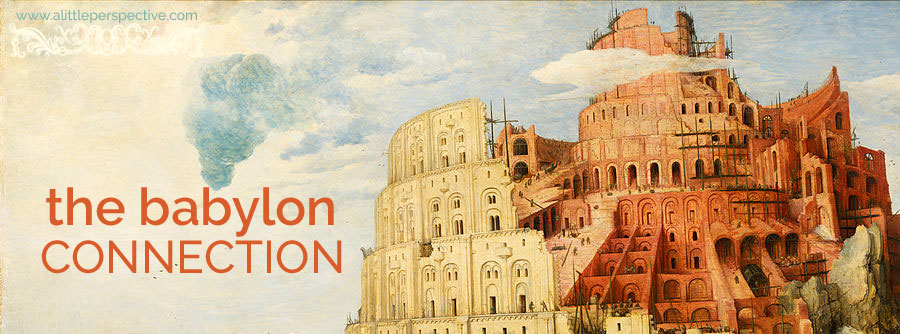the babylon connection
the babylon connection, part two
the babylon connection, part three
the babylon connection, part four
the babylon connection, part five
the babylon connection, part six
the babylon connection, part seven
the babylon connection, part eight
the babylon connection, part nine
the babylon connection, part ten
the babylon connection, part eleven
the babylon connection, part twelve
the babylon connection, part thirteen
Last time we saw that the pagan worship, which Nimrod instituted, venerated the sun and fire, as the earthly element of which the sun was supposed to be composed. The pagans also sacrificed to their gods on the high places, as the Scriptures constantly record. A high place is the closest an inhabitant of the earth can get to the sun. Bryant shows that this practice was not limited to the Canaanites, but in the classical writings we read of its practice among the heroes of the Greeks, the Persians, in Cappadocia and Pontus, “and, of all sacrifices, wherever exhibited upon the high places, none, perhaps, ever equalled in magnificence that which was offered by Mithridates upon his war with the Romans. … upon the top [of which mountain] he reared an immense pile, equal in size to the summit on which it stood … the fire is said to have been percieved at the distance of near a thousand stadia.” The heroes of the Romans are said by their poets to do the same, and as far away as Japan, “most of their temples at this day are constructed upon eminences; and often upon the ascent of high mountains.”
“This practice in early times was almost universal; and every mountain was esteemed holy.” Now perhaps we understand why in Greek mythology the gods were said to dwell on the summit of Mount Olympus; why the cartoons depict an arduous mountain climb for he who seeks the wisdom of the sage hermit, and why the Scripture says that on the day of the Lord’s judgment, every mountain will be brought low.
“The eminences to which [the pagans] retired were lonely, and silent; and seemed to be happily circumstanced for contemplation and prayer. They, who frequented them, were raised above the lower world; and fancied that they were brought into the vicinity of the powers of the air, and of the deity who resided in the higher regions.”
Upon the high places were supposed to be the omphi, as the Greeks called it, but vox divina according to the Romans, meaning the voice or oracle of god. Plutarch reveals the name as Egyptian in origin, where it was called amphi, or the oracle of Ham. We have already seen that he whom the Semites called Ham, the Hamites called Am, who they worshiped as the sun god: Am-On, or Amon. “In consequence of this, the mountains where [the oracles] were supposed to be delivered, came to be denominated Har-al-ompi; which al-ompi by the Greeks was changed to Olympus.”
All quotations from Bryant’s Ancient Mythology, volume 1, pp. 293- 296. To be continued …
the babylon connection, part fifteen
the babylon connection, part sixteen

2 thoughts on “the babylon connection, part fourteen”
Thanks for the mention of the high places being brought low; it helps me appreciate anew how profound God's word is.
Oh, I really liked this study. Very interesting etymologies.